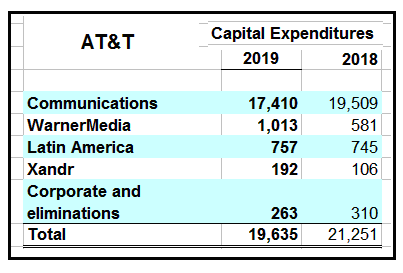FOR IMMEDIATE RELEASE
Bruce Kushnick, bruce@newnetworks.com
AT&T’s Comments to the CA Broadband Council Exposes Serious Questions about the Company’s Network Investments.
The IRREGULATORS’ new report is based on questions surrounding comments made by AT&T to the CA Broadband Council and the CA Public Utility Commission pertaining to network investments and fiber optic lines in California and even in the US. And it is tied to previous comments filed by as IRREGULATORS.
In September 2020, California Governor Newsom released an executive order to develop an “action” plan in order to solve the Digital Divide by upgrading all of California with broadband, capable of 100mbps download speeds, at affordable prices. The California Broadband Council has been collecting comments about the Newsom plan as well as the CA Public Utility Commission (CAPUC).
The IRREGULATORS filed Comments about the Newsom plan with CAPUC and with the CA Broadband Council; this report is an addition to the IRREGULATORS’ filings.
REPORT SUMMARY
AT&T claims that it spent $135 billion over the past 5 years on the wireline and wireless networks nationwide; $8.7 billion in just California from 2017-2019. (crmgco.com) The company also stated it added 2.1 million additional fiber optic connections, and that only 2% of AT&T’s territory is unserved. AT&T wrote:
“Over the past five years, AT&T has expanded access to high-speed Internet by investing more than $135 billion nationwide in our wireless and wireline networks. This totals more in domestic U.S. investment than any other public company. In California specifically, we invested more than $8.7 billion from 2017-2019 and expanded access to high-speed internet by building more than 2.1 million additional fiber connections across the state…. encourage the deployment of broadband to the 2% of households where services are not yet available.”
Sounds plausible until you examine the numbers in detail. To summarize the report:
A) $135 Billion in 5 Years appears to be exaggerated by $30-50 billion. The AT&T annual reports show that the construction expenditures were only $101 billion for the last 5 years, including 2020, not $135 billion. Worse, this next chart shows that over $2.2 billion had nothing to do with the state utility but was for Time Warner or Latin America or Xandr (an advertising related service).

Source: AT&T Annual Reports
This would mean that the total for communications construction could be as little as only $87 billion – a difference of $48 billion over 5 years.And this is chump change when one realizes that the capital expenditures are against $181 billion in revenues for 2019, and $170 billion for 2018– a fraction of the total revenues.
B) AT&T claims it spent $8.7 billion over the last 3 years in California to expand high speed broadband, wireline and wireless.
Using the last available FCC published information for AT&T California, (2007) we find that, on average, the company was spending $3 billion annually– $9 billion for 3 years.
But this is very problematic because this $9 billion was only for the construction expenses of the wireline state utility; this new quote claims it includes wireless, which is not part of the state utility. If this is true, then the actual expenditures for the wireline networks could have been illegally diverted to fund wireless and other businesses.
C) How many lines of fiber are there in AT&T CA’s territory? AT&T writes that it “expanded access to high-speed internet by building more than 2.1 million additional fiber connections.”
Unfortunately, this number is contradicted by other AT&T statements.
- In a CAPUC filing, November 2020, AT&T claimed it had 2.6 million fiber optic lines, and AT&T’s website claims it added 3 million fiber optic lines in just 2018.
- None of the numbers match and these numbers were never audited
D) AT&T also claims that 2% of their territory is unserved with broadband – “are not yet available.”
By 2007, AT&T was supposed to have 100% of AT&T California with broadband coverage, and 21 additional states based on the AT&T-BellSouth merger. Unfortunately, many of the states have gaping holes a decade later that should have at least gotten DSL.
In short, all of these AT&T statements are, at best, unaudited, and unreliable to be used for public policy decisions and need to be investigated. However, this is just the tip of the dark iceberg, as we estimate that there is over $2 billion annually being overcharged from multiple cross-subsidies and thus financial manipulations, as documented.
